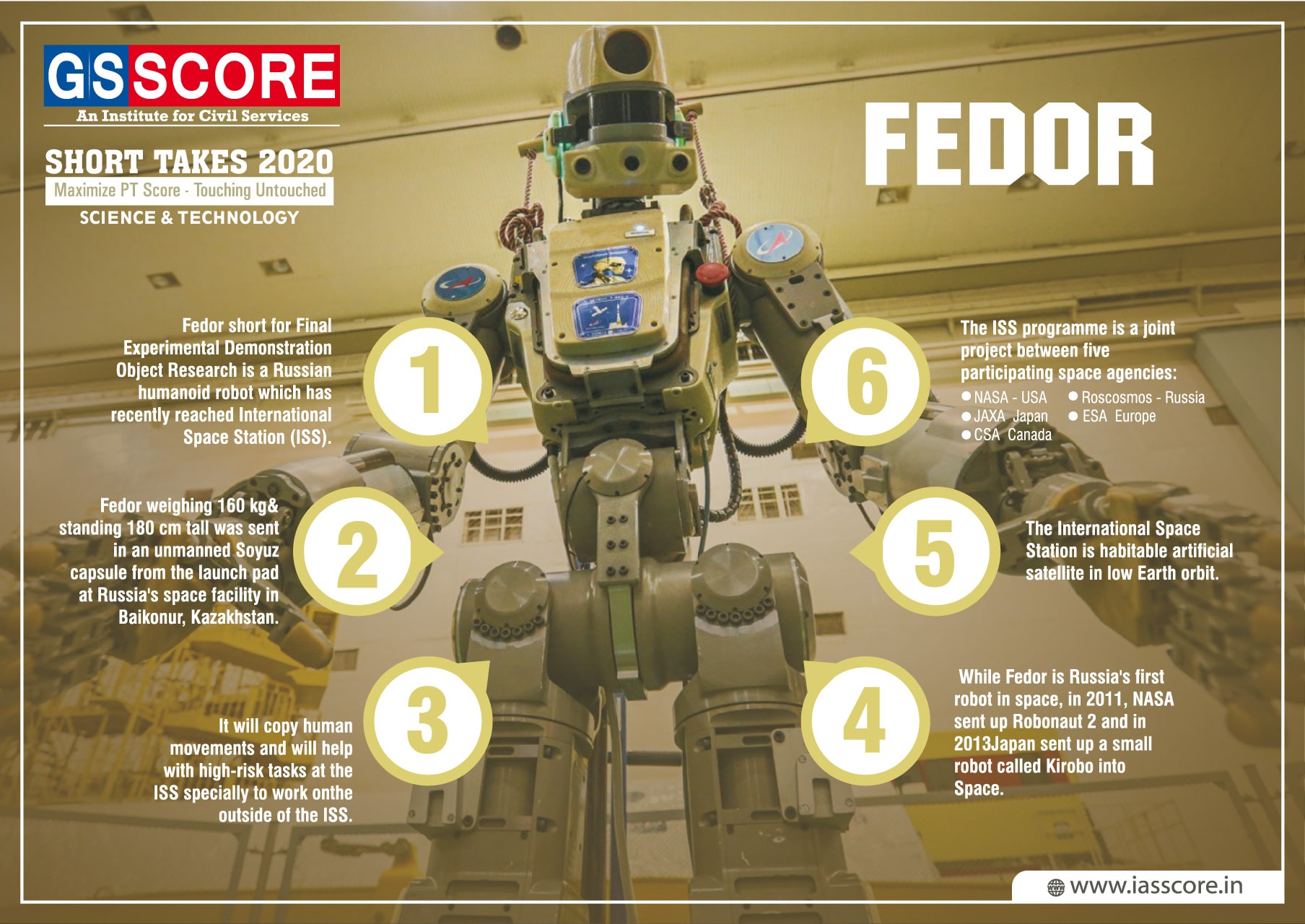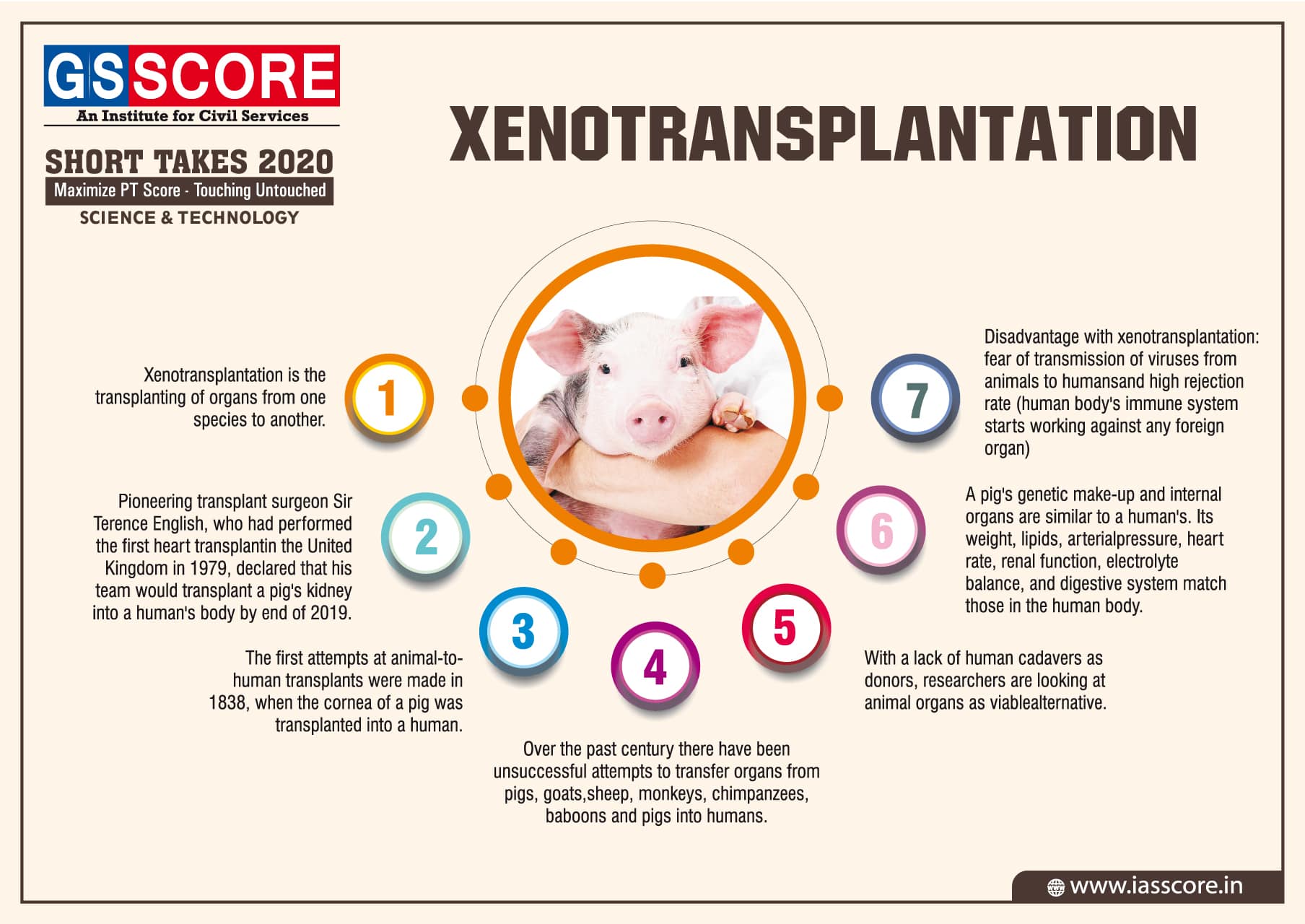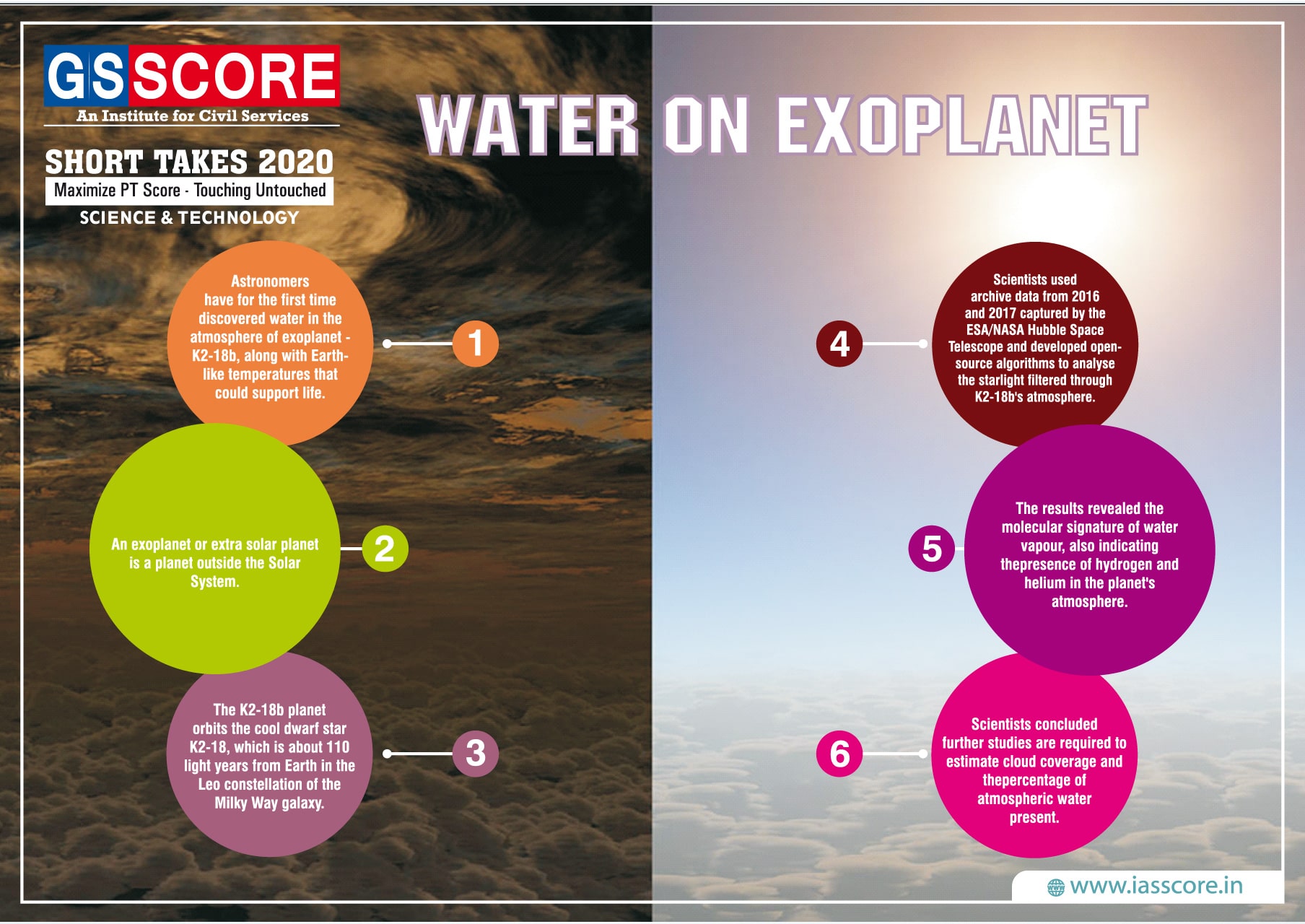Science & Technology: Super Computer and its Applications
Super computer and Its Applications
Supercomputer
- A type of computer which is used in areas that requires large mathematical and difficult calculations at frontline of processing capacity is known as Super computer.
- The computing performance of a supercomputer is measured in FLOPS (that is ?oating-point operations per second) instead of MIPS (Million Instruments Per Second).
- The supercomputer consists of tens of thousands of processors which can perform billions and trillions of calculations per second, or you can say that supercomputers can deliver up to nearly a hundred quadrillions of FLOPS.
- They have evolved from grid to cluster system of massively parallel computing.
- Cluster system computing means that machine uses multiple processors in one system instead of arrays of separate computers in a network.
- These computers are most massive size. A most powerful supercomputer can occupy few feet to hundreds of feet.
Characteristics of Supercomputer
- They can support more than a hundred users at a time.
- These machines are capable of handling the massive amount of calculations that are beyond the human capabilities, i.e., the human is unable to solve such extensive calculations.
- Many individuals can access supercomputers at the same time.
- These are the most expensive computers that can ever be made.
Features of Supercomputer
- They have more than 1 CPU (Central Processing Unit) which contains instructions so that it can interpret instructions and execute arithmetic and logical operations.
- The supercomputer can support extremely high computation speed of CPUs.
- They can operate on pairs of lists of numbers instead of pairs of numbers.
- They were used initially in applications related to national security, nuclear weapon design, and ! cryptography. But nowadays they are also employed by the aerospace, automotive and petroleum industries.
Uses of Supercomputer
Supercomputers are not used for everyday tasks because of their superiority. Supercomputer handles those applications, which required the real-time processing. The uses are as follows:
- They’re used for scienti?c simulations and research such as weather forecasting, meteorology, nuclear energy research, physics, and chemistry, as well as for extremely complex animated graphics.
- They are also used to interpret new diseases and predict illness behaviour and treatment.
- The military uses supercomputers for testing new aircrafts, tanks, and weapons.
- They also use them to understand the effect on soldiers and wars. These machines are also used for encrypting the data.
- Scientists use them to test the impact of nuclear weapon detonation.
- In entertainment, supercomputers are used for online gaming and creation of animation.
- Supercomputers help in stabilizing the game performance when a lot of users are playing the game.
The potential applications of supercomputers
- Recreating the Big Bang: The “Big Bang” or the initial expansion of all energy and matter in the universe, happened more than 13 billion years ago in trillion-degree Celsius temperatures, but supercomputer simulations make it possible to observe what went on during the universe’s birth. Researchers can run models that require upward of a thousand trillion calculations per second, allowing for the most realistic models of these cosmic mysteries yet.
- Understanding earthquakes: By modeling the three-dimensional structure of the Earth, researchers can predict how earthquake waves will travel both locally and globally. The resulting techniques can be used to map the subsurface for oil exploration or carbon sequestration, and can help researchers understand the processes occurring deep in the Earth’s mantle and core.
- Modeling swine ?u: Potential pandemics like the H1N1 swine ? u require a fast response on two fronts: First, researchers have to ? gure out how the virus is spreading. Second, they have to ? nd drugs to stop it. Supercomputers can help with both. During the recent H1N1 outbreak, researchers at Virginia Polytechnic Institute and State University in Blacksburg, used an advanced model of disease spread called EpiSimdemics to predict the transmission of the ? u.
- Testing nuclear weapons: Computer simulations to ensure that the country’s cache of nuclear weapons is functional and safe. The real aim is to create better simulations of nuclear explosions and to do away with real-world nuke testing for good.
- Predicting climate change: The challenge of predicting global climate is immense. There are hundreds of variables. Dealing with these variables requires supercomputing capabilities. The resulting simulations both map out the past and look into the future. Models of the ancient past can be matched with fossil data to check for reliability, making future predictions stronger. New variables, such as the effect of cloud cover on climate, can be explored.
- Making possible more scienti?c advances: Supercomputing is needed for processing sophisticated computational models able to simulate the cellular structure and functionalities of the brain. This should enable us to better understand how our brain works and how we can cope with diseases such as those linked to ageing.
- More reliable decision-making: The world faces an increasing number of challenges at the local level as well as at the planetary scale. The convergence of HPC, Big Data and Cloud technologies will allow new applications and services in an increasingly complex scenario where decision-making processes have to be fast and precise to avoid catastrophes. Supercomputers are in the front line for developing essential public policies, from homeland security to climate action.
Different types of supercomputers are:
1. Tianhe-2 – China
The Tianhe-2 (Milky Way-2), built by China’s National University of Defence Technology (NUDT) for the National Supercomputer Center in Guangzho. It’s the most powerful computer in the world and performs at 33.86 petaflop/s (Pflop/s) on the Linpack benchmark.
The system has 3,120,000 computing cores made up from 16,000 computer nodes, each comprising two Intel Ivy Bridge Xeon processors and three Xeon Phi coprocessor chips.
2. Titan – United States
The Titan computer is a Cray XK7 system used by the United States Department of Energy at their Oak Ridge National Laboratory. The former top-ranked Jaguar supercomputer was upgraded in 2012 to become the then most powerful computer (until the Tianhe machine overtook it).
The system performs at 17.59 Pflop/s using 261,632 NVIDIA K20x cores.
3. Sequoia – United States
The Sequoia computer is based on the now unsupported IBM BlueGene framework. It has been used to make key advances in climate, astronomy and energy application areas.
Located in California’s Lawrence Livermore National Laboratory, the Sequoia platform has achieved 17.17 Pflop/s and uses 1,572,864 cores.
4. K Computer – Japan
The K computer was manufactured by Fujitsu at the RIKEN Advanced Institute for Computational Science (AICS) in Kobe, Japan.
This system hit 10.51 Pflop/s and uses 705,024 SPARC64 processing cores.
5. Mira – Unites States
Also built around the BlueGene architecture, the Mira is one of the older computers on the list. Primarily used by the Unites States Department of Energy (and now housed at the Argonne National Laboratory outside Chicago), it is being succeeded by the upcoming Aurora supercomputer.
The Mira computer has peaked at 8.59 Pflop/s and uses 786,432 cores.
6. Piz Daint – Switzerland
The Piz Daint, a Cray XC30 system, is the most powerful computer in Europe. It’s installed at the Swiss National Supercomputing Centre (CSCS) in Lugano, Switzerland.
Piz Daint achieved 6.27 Pflop/s on the Linpack benchmark, using 73,808 NVIDIA K20x accelerator cores.
7. Shaheen II – Saudi Arabia
The Shaheen II is the newest computer in the top 10 list. Based around a Cray XC40 system, it went live in 2015 and is the only computer from the region in the top 10. It’s located at the King Abdullah University of Science and Technology.
The platform has performed at 5.536 PFlop/s and uses 196,608 Intel Xeon E5-2698v3 cores.
8. Stampede – United States
The Stampede computer is a Dell PowerEdge C8220 system based around interlinked powerful desktop computers.
It’s based at the Texas Advanced Computing Center and has reached 5.17 Pflop/s.
9. Juqueen – Germany
The only other Europe-based computer, housed at the Forschungszentrum Juelich in Germany, is based on the older BlueGene architecture from IBM. It has reached 5.01 Pflop/s.
10. Vulcan – United States
The Vulcan computer is another IBM BlueGene and is installed at Lawrence Livermore National Laboratory, along with No 3, the Sequoia. It has reached a speed of 4.29 Pflop/s.
Recent Advancement
1. BullSequana Supercomputer
-
- France-based European Information Technology Corporation Atos and C-DAC (Centre for Development and Advanced Computing) of India have entered into agreement for designing, building and installing BullSequana Supercomputer in India.
- BullSequana Supercomputer will create a network of 70 high-performance supercomputing facilities for various academic and research institutions across India. Spanning over a period of seven years.
Application:
- Strengthening academic and research institutions in India
- Recreating the Big Bang
- Understanding earthquakes, cosmos and subatomic particle
- Intelligence Agencies Mapping the blood stream
- Modelling swine ?u, other deadly diseases
- Testing nuclear weapons
- Predicting climate change/ Weather Forecasting/ hurricanes
- Building arti?cial human brain
2. Shakti – India’s ?rst indigenous Microprocessor
Indian Institute of Technology Madras (IIT Madras) researchers have designed India’s ? rst indigenous microprocessor called ‘Shakti’.
Signi?cance
‘Shakti’ will reduce dependency on imported microchips and the risk of cyber attacks.
‘Shakti’ will be ideal for communication and defence sectors.
The team is now ready with ‘Parashakti’, an advanced microprocessor for super computers
“Arsenic-resistant rice”
Context
Researchers have developed and commercialised a rice variety that is resistant to arsenic.
About
About Muktoshri:
- The new rice variety, Muktoshri, also called IET 21845, was developed jointly by the Rice Research Station at Chinsurah coming under West Bengal’s Agriculture Department and the National Botanical Research Institute, Lucknow, over several years.
- Work on developing the variety started in 2006 and by 2013 the scientists were successful.
- This variety uptake very less amount of arsenic from soil and water in comparison to other varieties of rice.
- The variety yields 5.5 metric tonnes per hectare in the Boro season and 4.5 to 5 metric tonnes per hectare in the Kharif season, respectively.
Arsenic contamination:
- Arsenic is naturally present at high levels in the groundwater of a number of countries. It is highly toxic in its inorganic form.
- Arsenic contamination of groundwater is widespread and there are a number of regions where arsenic contamination of drinking-water is significant.
- Arsenic is one of WHO’s 10 chemicals of major public health concern.
- It is now recognized that at least 140 million people in 50 countries have been drinking water containing arsenic at levels above the WHO provisional guideline value of 10 μg/L (4).
- According to the latest report of the Central Ground Water Board (CGWB), 21 states across the country have pockets with arsenic levels higher than the Bureau of Indian Standards’ (BIS) stipulated permissible limit of 01 milligram per litre (mg/l).
- In India, arsenic contamination was first officially confirmed in West Bengal in 1983. Close to four decades after its detection, the scenario has worsened, about 9.6 million people in West Bengal are at immediate risk from arsenic contamination in groundwater.
- West Bengal is among the States with the highest concentration of arsenic in groundwater, with as many as 83 blocks across seven districts having higher arsenic levels than permissible limits.
Impacts:
- Irreversible damages: Major impacts of arsenic in water include skin damage, keratosisand skin cancer, cancers of lung and bladder and diseases of the vascular system.
- Poisoning: According to the World Health Organization, long-term exposure to arsenic, mainly through drinking water and food, can lead to poisoning.
- A danger to livestock: Rice husk, containing high levels of arsenic, is being used as fodder for livestock, exposing them to the hazardous impacts of arsenic contamination. This is also leading to a potential risk for humans when they consume cattle based food products.
- Cancer-causing agent: Arsenic poisoning is one of the greatest reasons for the growing cases of cancer for people living in India’s Ganga plains. It can lead to the aggravated condition of Cancer.
“Voyager 2”
Context
In an incredible feat of remote engineering, NASA has fixed one of the most intrepid explorers in human history. Voyager 2, currently some 11.5 billion miles from Earth, is back online and resuming its mission to collect scientific data on the solar system and the interstellar space beyond.
Understanding Interstellar Space:
- 'Inter' means between. 'Stellar' refers to stars. Interstellar space is the part of space that exists between stars.
- Scientists define the beginning of interstellar space as the place where the Sun’s constant flow of material and magnetic field stop affecting its surroundings.
- This place is called the heliopause.
What happened to the spacecraft?
- The spacecraft had run into trouble on January 28, when NASA revealed that it had unexpectedly, and for unknown reasons, shut down.
- The venerable probe failed to execute a spin maneuver as intended. As a result, two onboard systems remained on longer than planned, sucking up so much energy that Voyager 2 automatically shut off its science instruments.
- But now, Voyager 2 is back online — gathering and relaying scientific information just as before.
‘National Mission on Quantum Technologies & Applications (NM-QTA)’
Context
The government in its budget 2020 has announced a National Mission on Quantum Technologies & Applications (NM-QTA) with a total budget outlay of Rs 8000 Crore for a period of five years to be implemented by the Department of Science & Technology (DST).
About the mission:
- The new mission will oversee the development of quantum technologies for communications, computing, materials development and cryptography.
- It will coordinate the work of scientists, industry leaders and government departments
- Implementing authority: The move will be implemented by the Department of Science & Technology (DST).
- Focus area: The areas of focus for the Mission will be in fundamental science, translation, technology development, human and infrastructural resource generation, innovation and start-ups to address issues concerning national priorities.
Quantum Technology:
- Quantum technologies are rapidly developing globally with a huge disruptive potential.
- Quantum technology is a class of technology that works by using the principles of quantum mechanics (the physics of sub-atomic particles), including quantum entanglement and quantum superposition.
- Quantum entanglement is when two atoms are connected, or entangled, despite being separated.
- Quantum superposition is the theory that sub-atomic particles exist in multiple states simultaneously.
- It concerns the control and manipulation of quantum systems, with the goal of achieving information processing beyond the limits of the classical world.
- Quantum technology is opening up new frontiers in computing, communications, cyber security with wide-spread applications.
- It is expected that lots of commercial applications would emerge from theoretical constructs which are developing in this area.
- Quantum technology promises improvements to a vast range of everyday gadgets, including:
- more reliable navigation and timing systems
- more secure communications
- more accurate healthcare imaging
- more powerful computing
- The next generation transformative technologies that will receive a push under this mission include quantum computers and computing, quantum communication, quantum key distribution, encryption, crypt analysis, quantum devices, quantum sensing, quantum materials, quantum clock and so on.
Significance of the mission:
- Super-secure communication network: The mission may eventually lead to the creation of a super-secure communication network to make online financial transactions hacking-proof besides ensuring full-proof safety of every bit of digital communication.
- Solution for complex problems: Quantum principles will be used for engineering solutions to extremely complex problems in computing, communications, sensing, chemistry, cryptography, imaging and mechanics.
- Global recognition: India’s considerable investment in the field places it alongside the United States, Europe and Russia. In 2018, US decided to invest US$1.2 billion over five years in a national quantum initiative, and in 2016, Europe pledged US$1.13 billion for quantum technologies. Russia is also spending huge amount on quantum technologies .
Fedor

Xenotransplantation

Sisir Kumar Mitra

Water on Exoplanet

Pyrofuse


